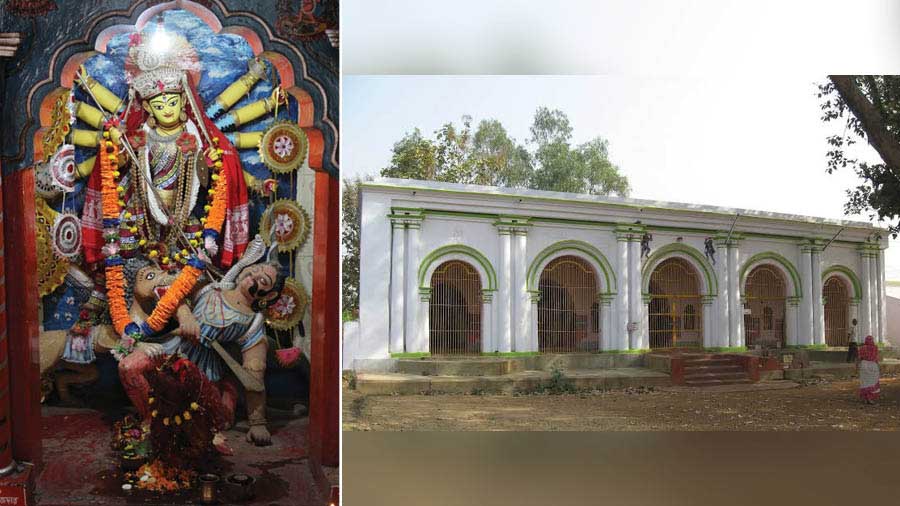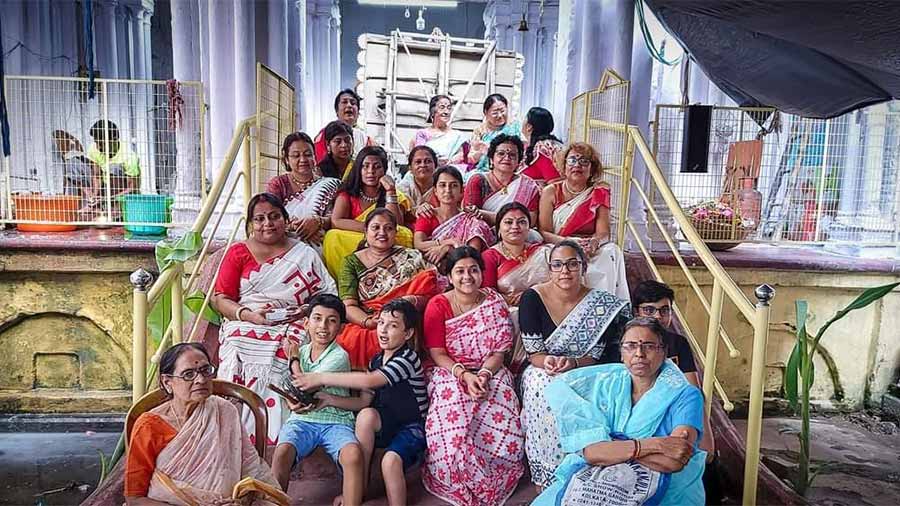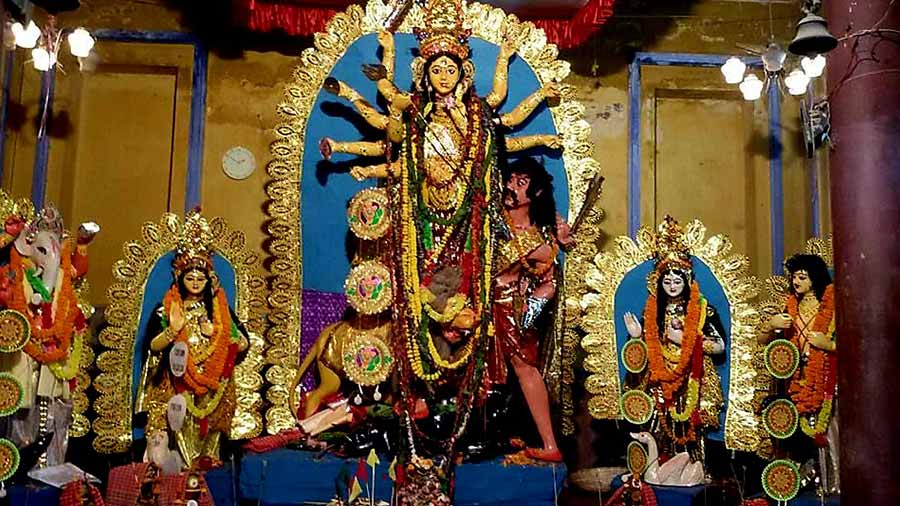Bishnupur, the city of terracotta temples, has tucked within itself what many regard to be the oldest Durga Puja in the region as well as in Bengal. The Puja revolves around a miraculous tale that established the Malla dynasty in present-day Birbhum. Even though the royal family originally in charge of the Puja has scattered far and wide ever since, the Puja remains, organised over 18 days.
The Malla dynasty that presided over the Mallabhum kingdom (primarily located in the present-day Bankura district) was established by Adi Malla in 694 CE, with its capital at Pradyumnapur (close to Bankura). In 997 CE, then king Jagat Malla shifted his capital to Bishnupur, then a dense forest. The account goes: Jagat Malla was hunting in the forest when he spotted a deer. Taking off after it, he soon entered the deepest tresses of the forest, where the deer seemed to disappear. Instead, he saw a crane (the bird) posed on a charulata or banyan tree (both are mentioned in the local accounts), which easily defeated the king’s hawk and disappeared, too.
The stunned king then saw a woman step out, divine in essence. With her arrival, the forest resounded with a deep feminine laughter, and its reverberation broke the king’s stupor. He woke up only to find the voice returning, telling him that she was Mrinmayee Devi (another name for goddess Durga). She assured Jagat Malla that she was happy with his able rule, but ordered him to shift his capital to where the forest stood. She showed him a spot near the charulata or banyan tree, saying that digging the spot would reveal a little figurine of the goddess. Jagat Malla was further instructed to make a clay idol with the figurine at its heart, alongside building a temple there. The king returned to Pradyumnapur, gathering all his workers and resources to build his new capital. The location of the Mrinmayee Mandir today is exactly where the figurine was found.
Durga Puja became the life force of Bishnupur
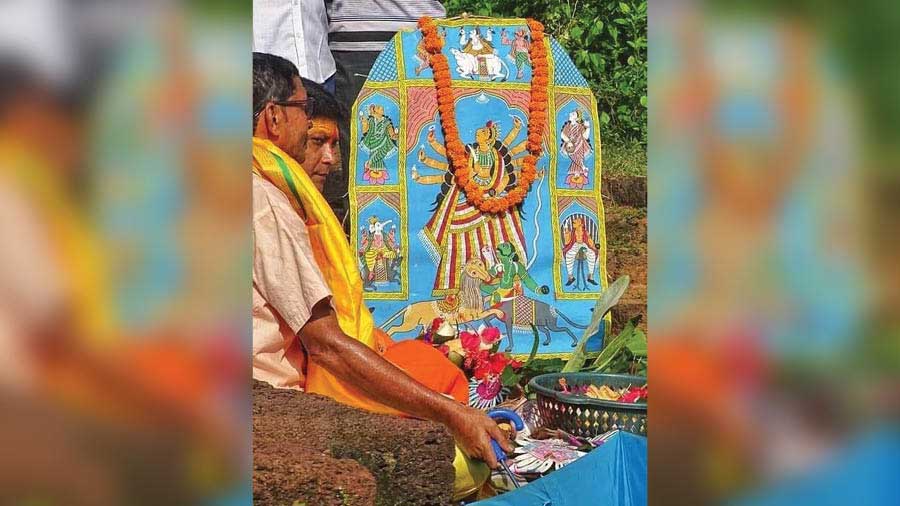
The pot painting of Durga that is worshipped alongside the main idol every year
The thousand-year-old idol was made from the clay of Ganga. Back then, temples were rare and the clay of Ganga had to be carried far from its delta and into the hearts of Mallabhum. The idol of Durga is surrounded by smaller ones of Saraswati, Lakshmi, Kartik and Ganesh, which has been the case for more than a millennium. Under Jagat Malla, the addition of Durga’s retinue was a unique innovation, later spreading to the rest of Bengal. The forests gave way to the prosperous city of Bishnupur, with Durga Puja becoming its life force. The Durga idol is repainted every time a member of the royal family receives Mrinmayee Devi's divine dream. A separate pot painting of Durga is worshipped every year, too.
The imagery of the charulata tree, a creeper, imbibed the temple with vigorous life. It is said that the temple has stood the test of time because its foundation spot, where the creeper grew, has the same vigour as the plant itself. Locals believe that if someone ingested a part of the plant, it would grow even in their stomach, and that this life force exists in the temple as well.
In many ways, Bishnupur’s historical Durga Puja differs from the mainstream Pujas we see today. It begins on Jita Ashtami (observed on October 6 in 2023), much before Puja begins in the rest of Bengal. The goddess is worshipped with bel-baran, which refers to Indian quince leaves and fruits. Alongside Mrinmayee Devi, three other forms of Durga are worshipped: Boro Thakurani, Mejo Thakurani, and Chhoto Thakurani. The three forms are the same, except for the colours of their saris. The Foujdar family of artists paint these, and the art form is called Pot Chitra.
Cannon fire, Raavan Badh, masks, music and more
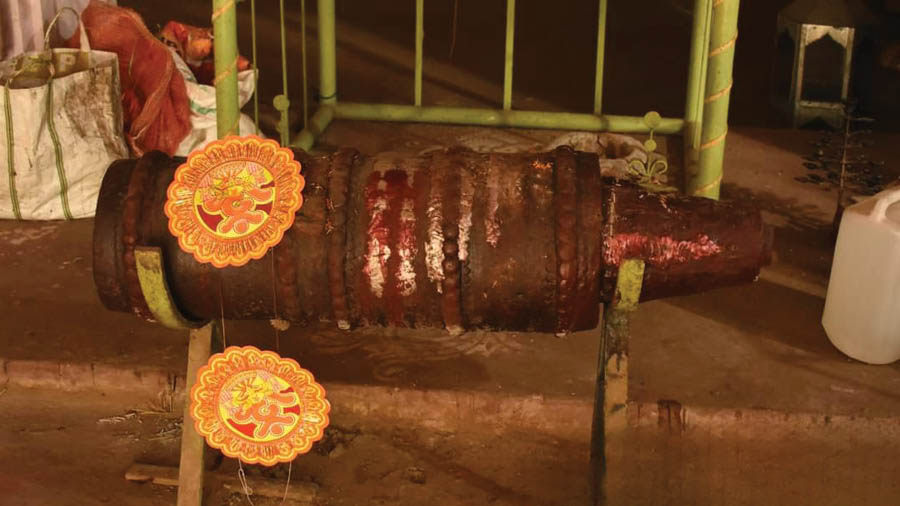
The cannon that is used during the Puja since the 16th century
To inaugurate the Puja, Boro Thakurani is bathed and brought under a bel tree. On Chaturthi, Chhoto Thakurani is invoked and brought to the same spot to be worshipped on Sashthi. On Ashtami, the household goddess of the Bishnupur royal family, Devi Bishalakshmi, is brought to the main temple and placed on a silver platter. A cannon is then fired nine times, a practice that started during the rule of king Dhari Malla in the 16th century.
Yet another unique feature of this Puja is that the purohit who conducts the Puja does so with his back turned to the goddess, and for certain spells, to the royal family, too. According to local beliefs, whoever conducts the Puja ends up with no male heir. On Vijaya Dashami, the pot painting of Durga is taken for visarjan. The main idol is never taken out of her space in the temple, and it stands to this day.
From Dashami to Dadashi, a Ravan Kaata puja is held. Four people dress up as Hanuman, Jambavan, Sugriv and Vibhishan, complete with masks. They perform dances across the city with a musician accompanying them. At local temples, Ram, Lakshman and Sita are worshipped. On Dashami, Kumbhakarna Badh is held; on Ekadashi, Indrajit Badh takes place; and at the end of the night on Dadashi, Ravan Badh is celebrated. This brings an end to the long celebration of Bishnupur’s oldest Durga Puja.
The Puja celebrations are not as grand as they used to be. After the East India Company suppressed the Malla dynasty and forced them to live off allowances, the glory of the Puja began to fade. However, most of the original rituals have endured, remaining as steadfast as in the initial days. For a while, the British used to send money to support the Puja. After Independence, even though the Malla family had long since spread out, the Puja carried on. The Mrinmayee idol stands in a reconstructed temple today, with the emotions of the locals as closely tied to this Puja as they were after the goddess first conferred her blessings on the Malla dynasty.


